In this post I’ll share a bit about what the day-to-day was like while on board the ship.
While we were underway, the ship needed to be looked after 24/7, so we were divided into three watch groups and operated on a 6 hours on 12 hours off schedule.
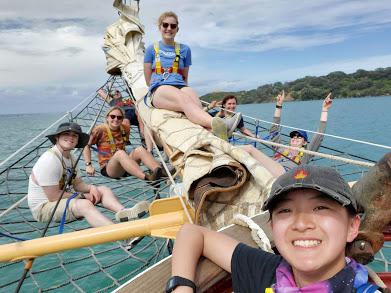
Hours of the day were split into 6 hour blocks - 0100-0700 (dawn watch), 0700-1300 (morning watch), 1300-1900 (afternoon watch), 1900-0100 (evening watch). This made it so that the watches we stood would rotate day-by-day (ex: On day 1, my watch group stood morning watch, and the next day we stood dawn watch, then were also on watch for that evening. On day 3, we stood afternoon watch, and on day 4, was back on morning watch again). Each day, we would have an all-hands meeting and class at 1400, regardless of who was currently on watch.


For each watch, each person would be assigned to help either on deck, in the lab, in the galley (the ship’s kitchen), or spend the watch with the engineers (only during morning or afternoon watches). These roles were pre-assigned, and everyone rotated through all of the assignments throughout the trip. I’ll go over what went on in the lab more in-depth in another post - this post will focus mainly on deck/galley responsibilities.
On deck, there were a series of jobs that needed to be done - lookout (keeping an eye out for traffic/land/misc.), helm (steering the boat), recording position and weather on the hour, and hourly boat checks (doing a full walk-through of the boat and making sure everything was in place). During a typical watch on deck, we’d rotate through these jobs every hour to give everyone a chance to participate in all roles on the boat. When hands were needed to set or strike sails, we’d get whoever was free at the moment (which oftentimes included people in lab, and occasionally people off-watch when more hands were needed) to tend to the appropriate lines.
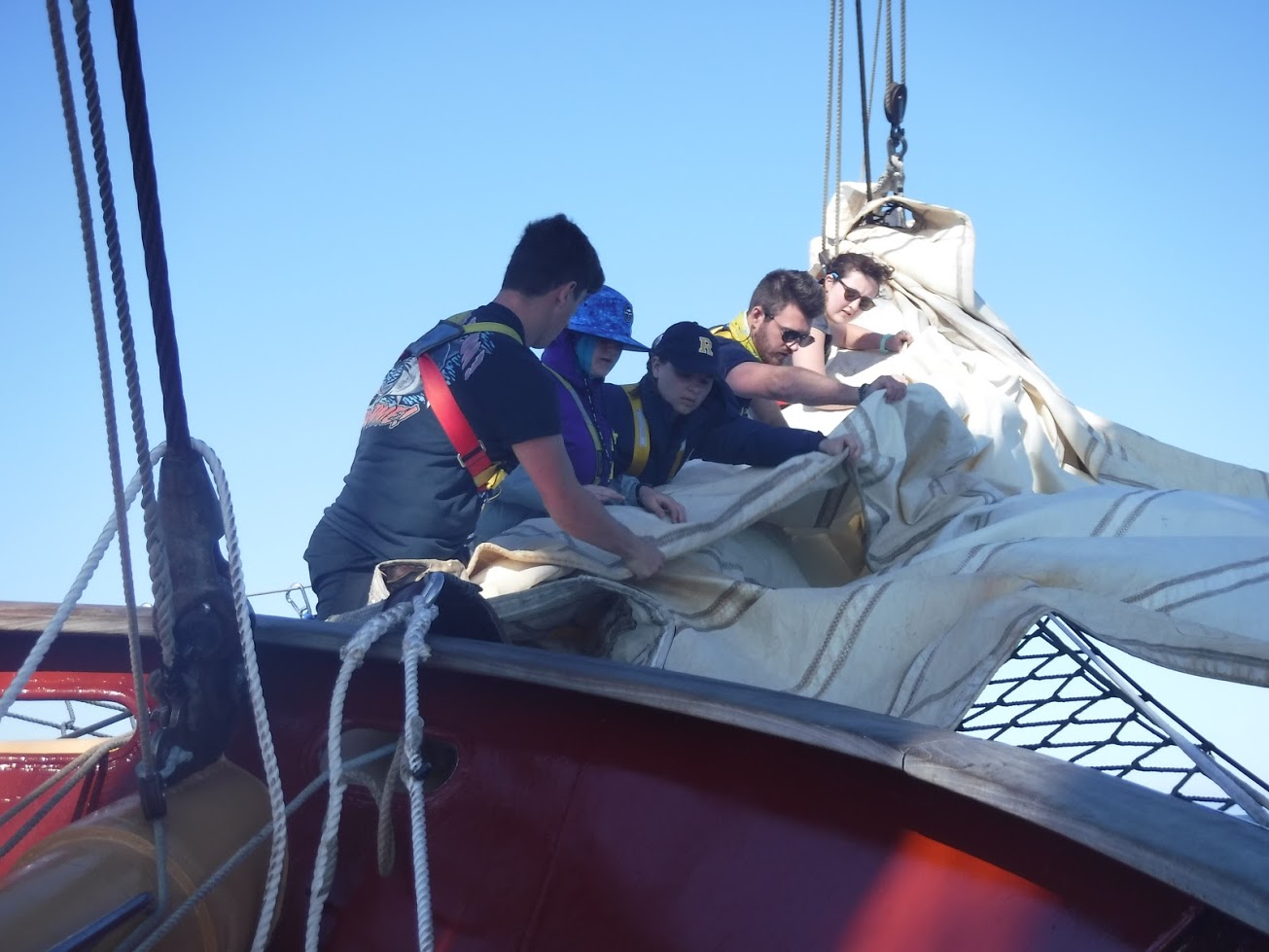
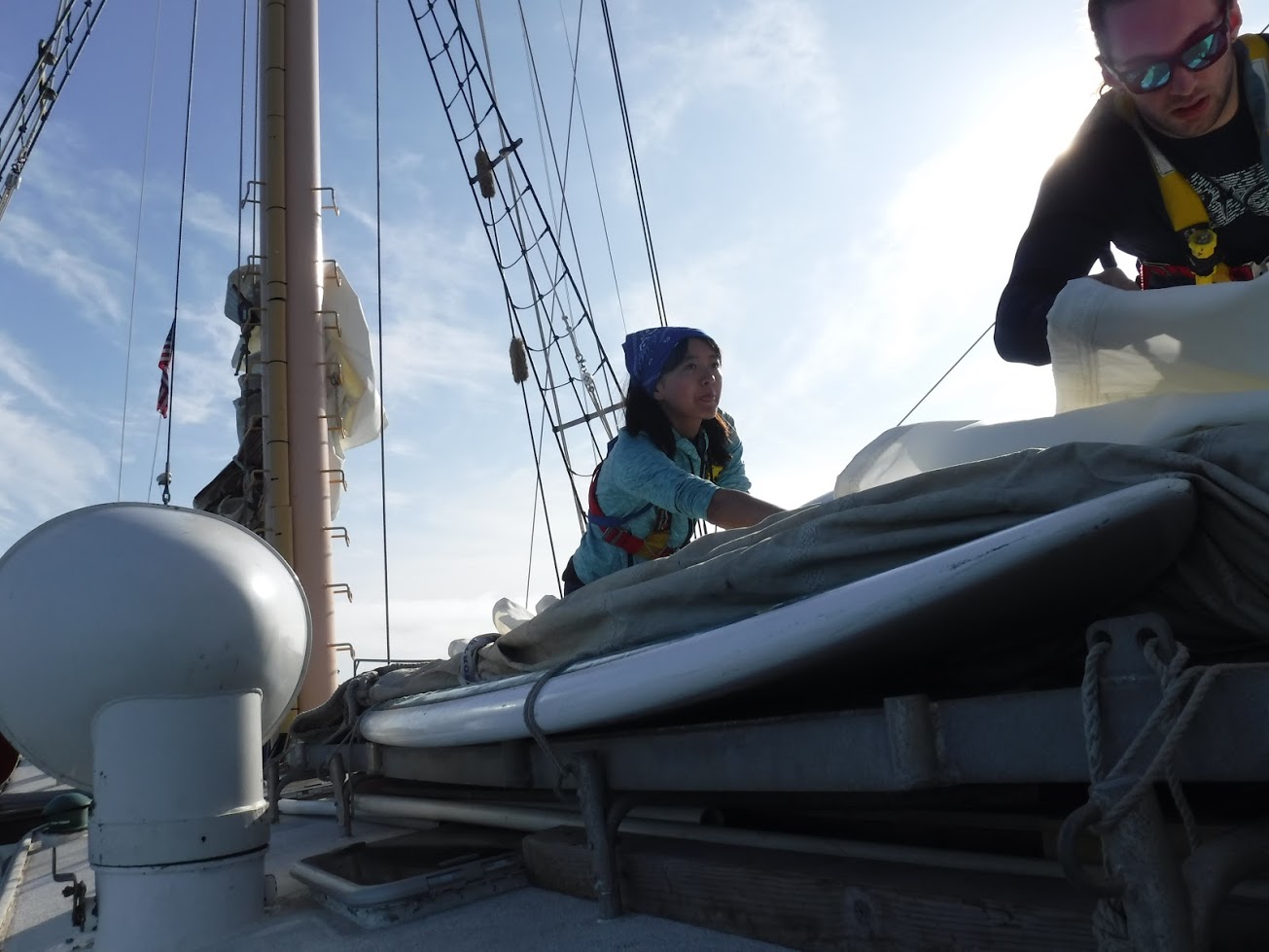
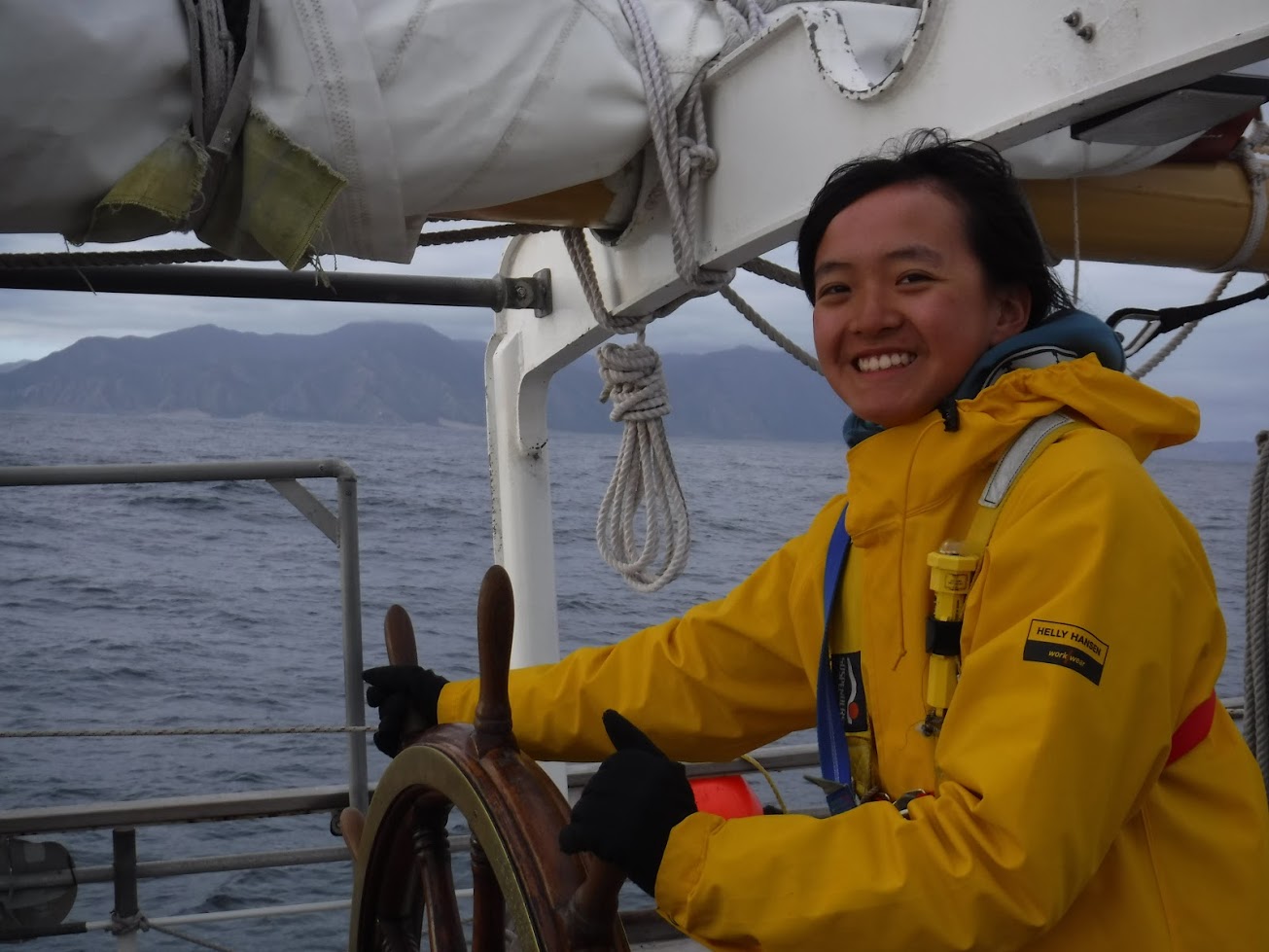
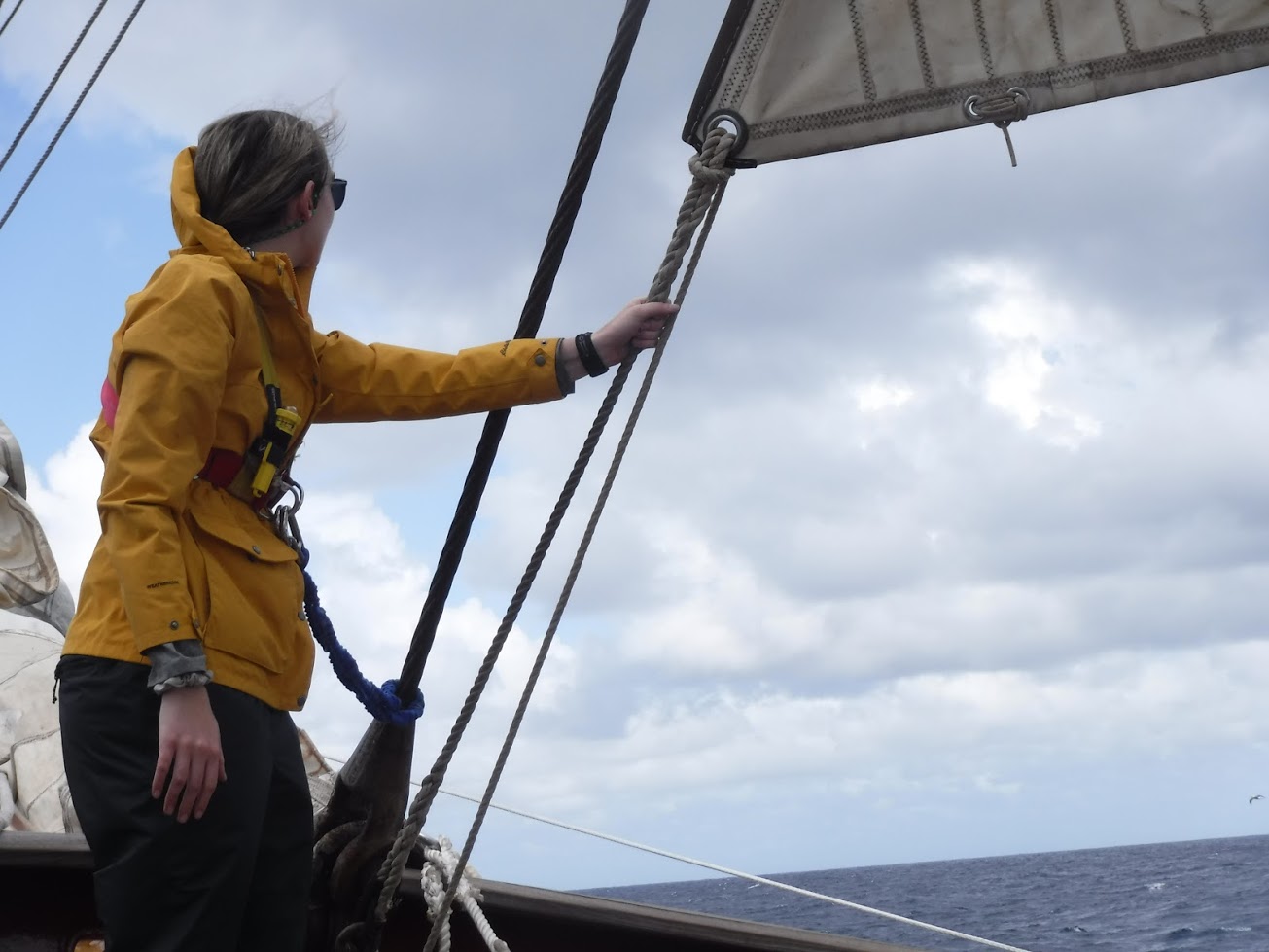


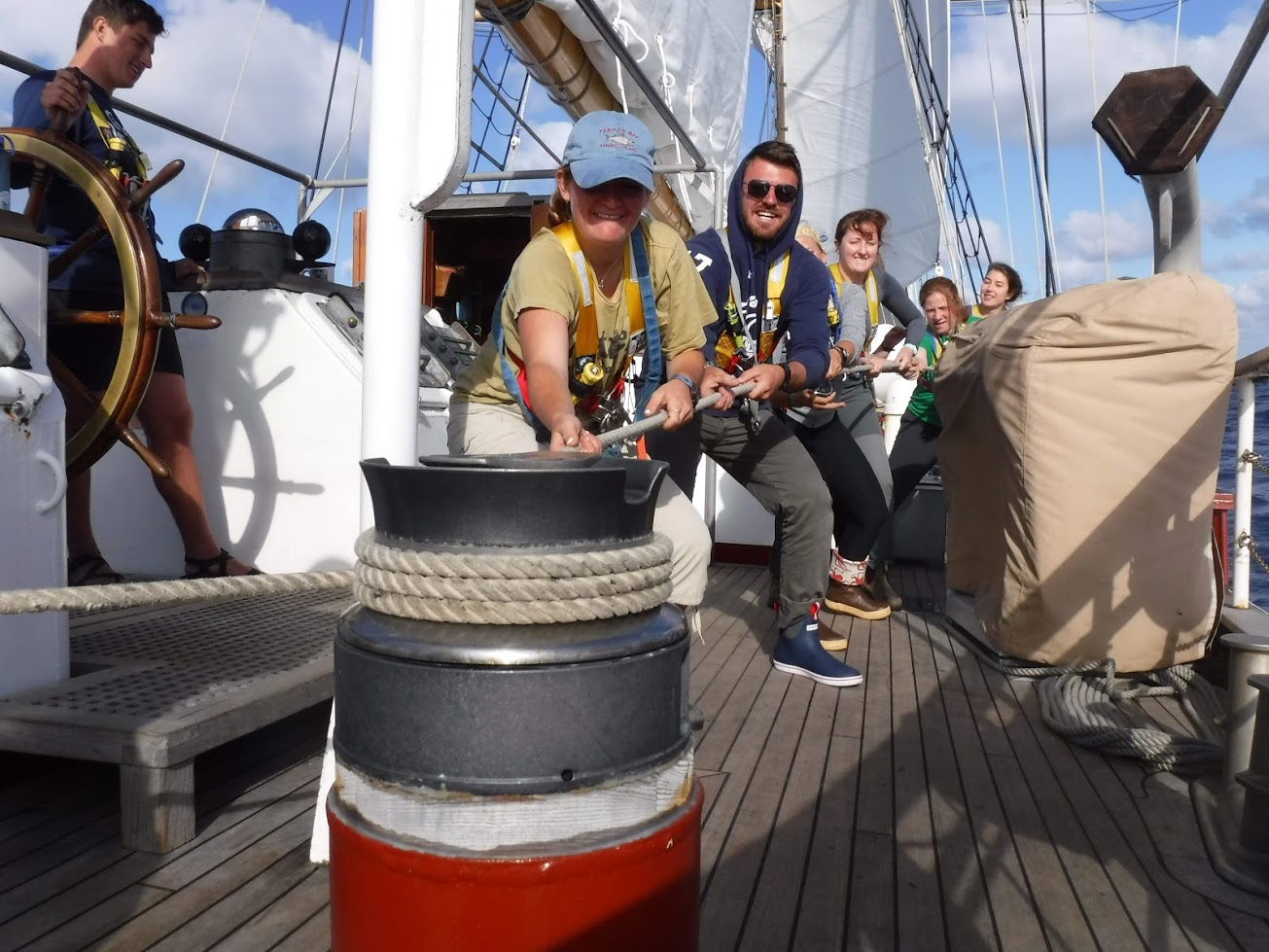
Some other miscellaneous tasks included cleaning the galley (during every evening watch), morning chores (during every morning watch), cleaning the deck (as-needed, during morning or afternoon watch).

The person assigned to the galley still participated on deck for most of watch, but was additionally responsible for going below decks to help out with dishes after meals. Doing dishes on the boat was definitely an interesting experience on its own - after people were done eating, they’d scrape off leftover food bits into the “food hole” (i.e. a large bucket with food scraps, napkins, etc. When we were far from land, we would log the bucket’s weight and dump its contents overboard). The dishes would then go through a commercial kitchen dish sanitizer, then would get put away.
The process itself was fairly straightforward, but adding the ship’s continuous rolling motion and limited elbow room added an interesting twist to everything - the dish tray would slide inside the sanitizer and get stuck on the hatch, the sanitizer would randomly close on it’s own at times, and trying to navigate a piping hot stack plates out the crowded doorway and into the cabinet while maintaining balance was always an ordeal. We all got better at it with time though! (it also made doing dishes during port stops a breeze!)
One day during dawn watch, the boat rolled so much that the part of the coffee maker that held coffee grounds flew out of the machine and made a mess on the floor. Subsequent rolls made sure to spread out the coffee grounds everywhere…
Since we couldn’t fit everyone in the main saloon to eat at the same time, mealtimes happened in seatings where there would be designated times for each watch to eat. A typical food schedule on the boat was:
- 0620: Breakfast for on-coming watch & others (folks like the captain, engineers, professors etc. who didn’t stand a regular watch)
- 0700: Breakfast for the off-coming watch & the “lazy watch” (the remaining group not going on or coming off watch)
- 1000: Morning snack
- 1220: Lunch for on-coming watch & others
- 1300: Lunch for off-coming watch & lazy watch
- 1600: Afternoon snack
- 1820: Dinner for on-coming watch & lazy watch
- 1900: Dinner for off-coming watch & others
- (after dinner) - Midnight snack was put out
One day I didn’t realize that the lazy watch ate dinner during first seating - didn’t make that mistake twice…
This food schedule was set up in a way so that there were meals before watch (except for dawn watch) and after watch (except for evening watch) while making sure there was always a watch still looking after the boat. Just like anything usually mundane, mealtimes on the boat were quite interesting. We ate seated at benches with gimballed tables that moved independently of the boat so that the food & liquids wouldn’t spill everywhere on a regular basis. On occasion, someone would accidentally bump the table and things would spill, but I think we generally did a good job of keeping this to a minimum.
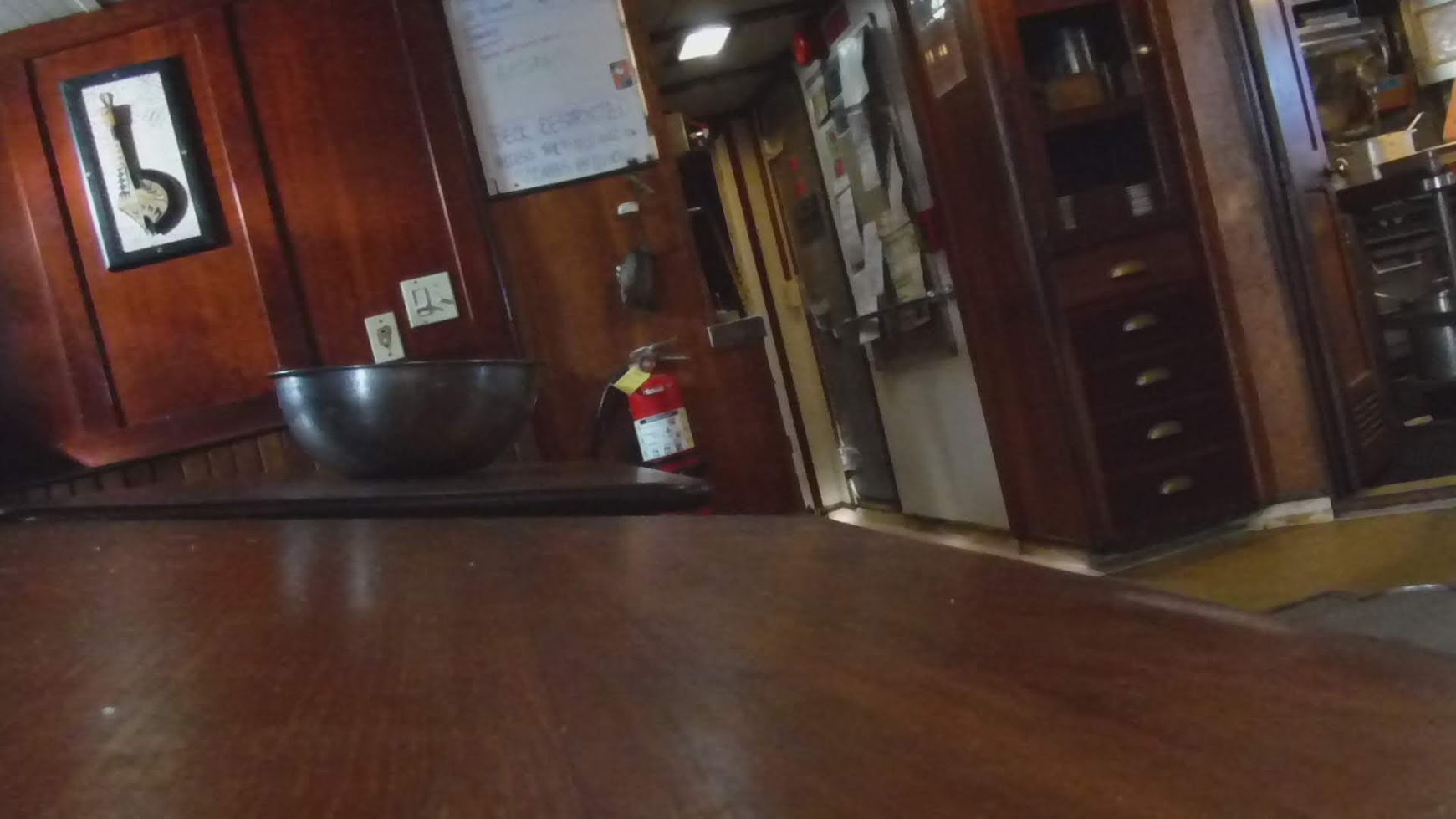
The food was made by Sabrina, our really awesome steward! Every day we were underway, one of us were assigned to be steward assistant. On these days, we didn’t stand a regular watch and instead spent the watch helping Sabrina out in the galley. On my day as steward assistant, we had lemon pound cake and usual eggs/bacon/yogurt for breakfast, apples for morning snack, fried rice for lunch, canned peaches for afternoon snack, salmon with homemade bread for dinner, and cookies for midnight snack. I think I got pretty lucky with the weather that day - it was a day with light winds, so the boat didn’t roll all too much. Just like other normally routine activities, cooking on the boat was a rather intriguing experience. It was pretty funny to be able to just pour oil on the left side of the grill and have the boat’s tilt spread it out for me. Something else that was interesting about cooking on the boat was dealing with knives - we couldn’t set them on counters since there was always a chance of them sliding off, so we’d have to tuck the knife under the cutting boards even if we just turned around for a second. I also don’t think I’ve never made that much food in one day before…
During our time off-watch, we were free to structure our time however we wanted (with the exception of a daily class at 1400). Personally, a lot of this time was spent juggling sleep/coursework/hanging out with others. For the most part, I prioritized sleep since I knew that I usually wasn’t a happy camper when I was sleep deprived. I was fortunate to be able to get decently good sleep on the boat, despite the occasional swell rolling me around in my bunk. On days I had dawn and evening watch, continuous sleep was hard to come by since there were meals and class during the daylight hours, so sleep on those days mostly consisted of a handful of naps. On the other days when I had morning or afternoon watch though, I’d get a good full night’s sleep to make up for it. While I don’t think I could keep this schedule up long-term, it worked out alright for the few weeks we were on the boat.
Coursework on the boat mostly consisted of the daily class (the subject would rotate every day) with an additional break-out session for those currently on watch. I really appreciated that the professors always seemed to find a way to relate something we were currently observing into our studies for the day - it made the content a lot more interesting and relevant. While we were on watch in the lab, we would collect data that fed into our individual research projects. During slow watches or our time off watch, we worked on our written coursework which consisted of essays, blog posts, and our research project. Admittedly, it was difficult to get work done while underway since it felt a lot like trying to get work done in a moving car - every minute or so when big swells hit, I had to pause on my work to hold on to my laptop and balance myself. Trying to get work done was also a sure-fire way to get sea sick which was never fun.

Other miscellaneous activities off-watch included things like doing laundry, showering, sitting on the headrig, or going aloft. Laundry on the boat was all done by hand in big 5-gallon buckets. I remember feeling like my clothes were so clean after washing them, but when I got home I realized just how dirty they actually still were - all of it went straight into the washer the moment I got home. There were two showers on the boat, and we were allotted one shower every other day. The water was warm which was nice, but the water pressure was nothing like it was at home. It was a lot more comfortable than I expected it to be given that we were on a boat, but it’s one of those things I won’t really miss too much.
When the weather was good, we could go out onto the headrig or go aloft. It was really awesome to see dolphins under the headrig - they really liked to swim in our wake, so they would hang out right under our feet for hours.
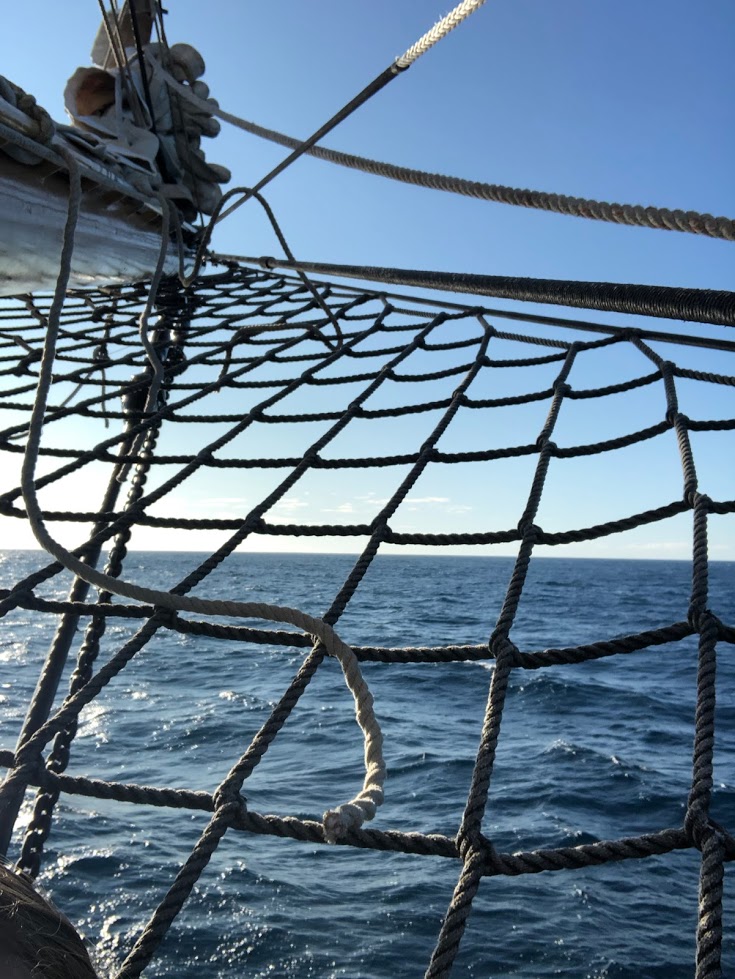




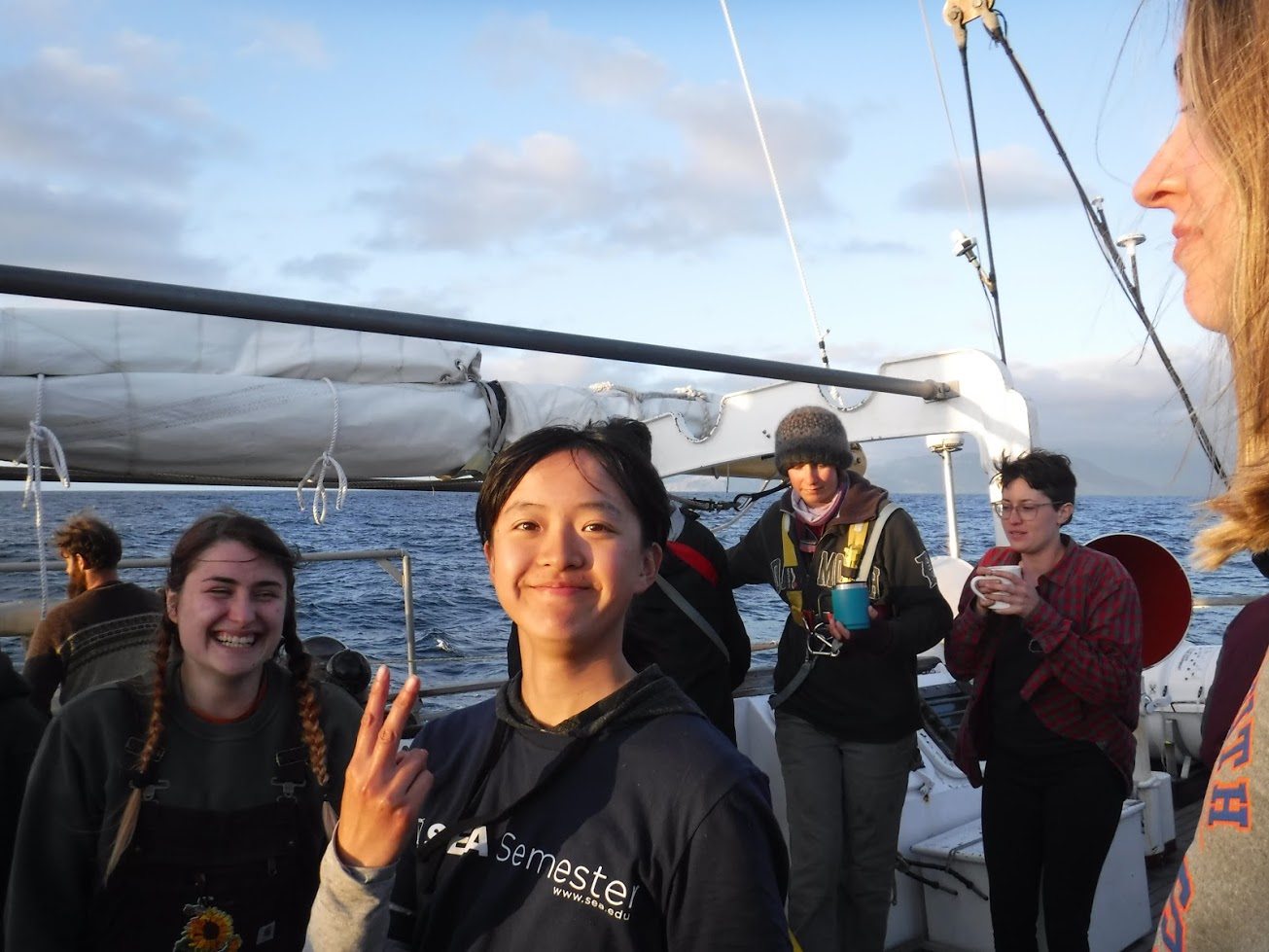
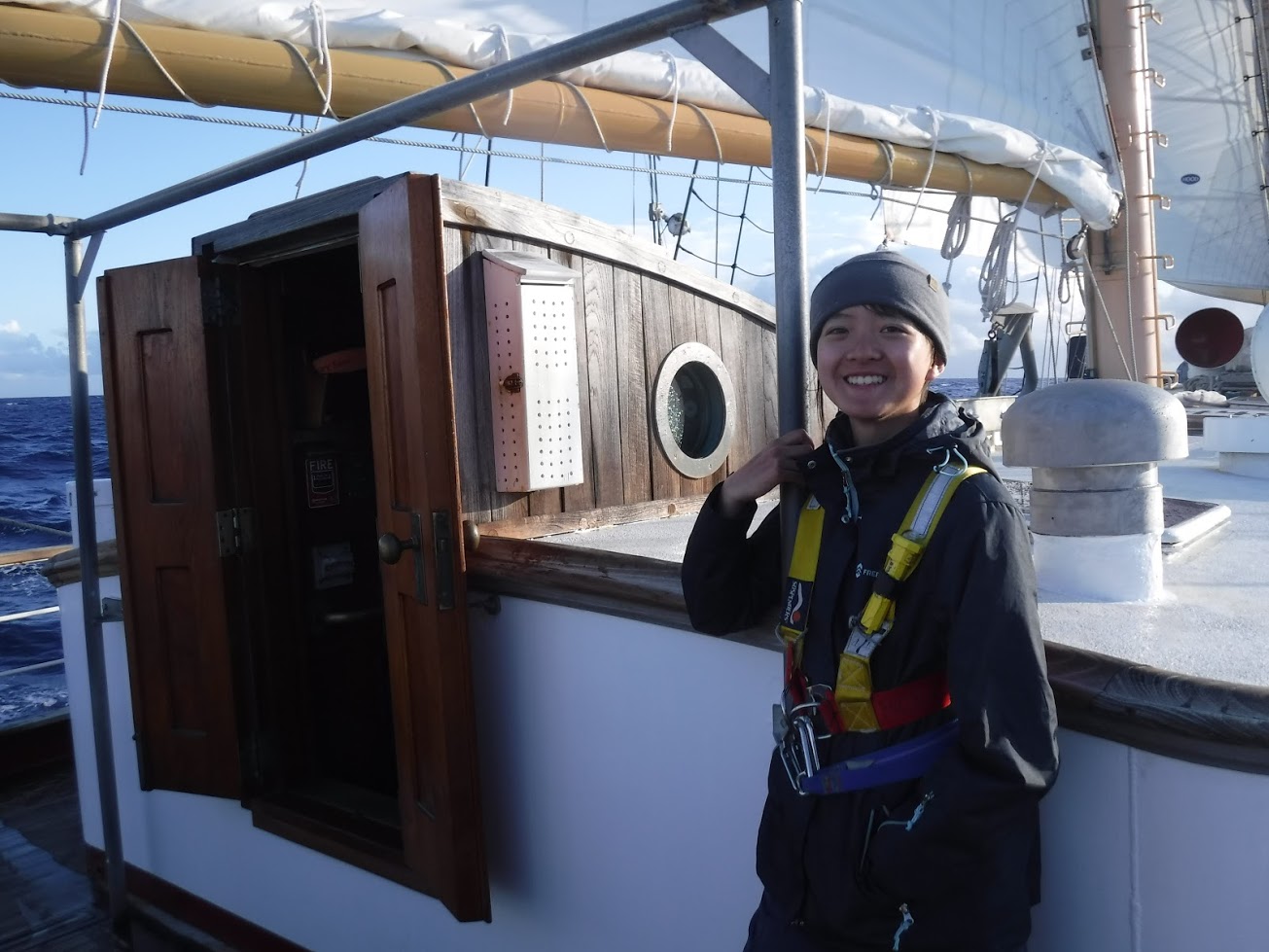
The view from aloft was spectacular! I personally didn’t really like climbing all the way to the top while we were underway because the boat’s rolling motion was significantly amplified the higher up we climbed, but hanging out on the platform halfway up was nice. One time I was aloft, I was able to see land and another ship in the distance that weren’t able to be seen from deck which was pretty neat.

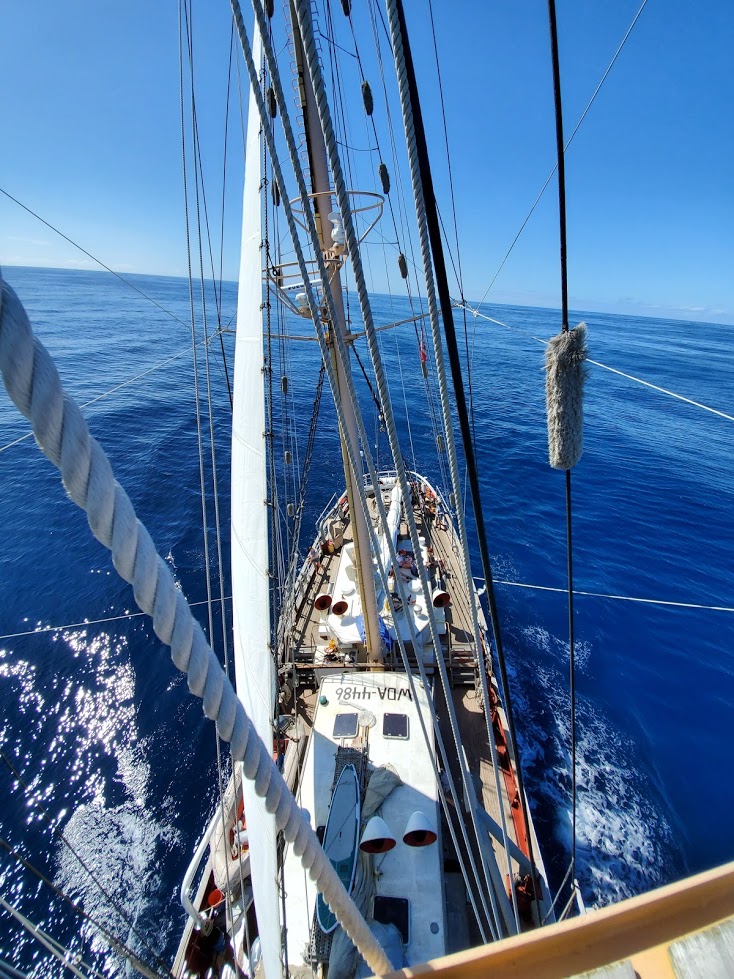
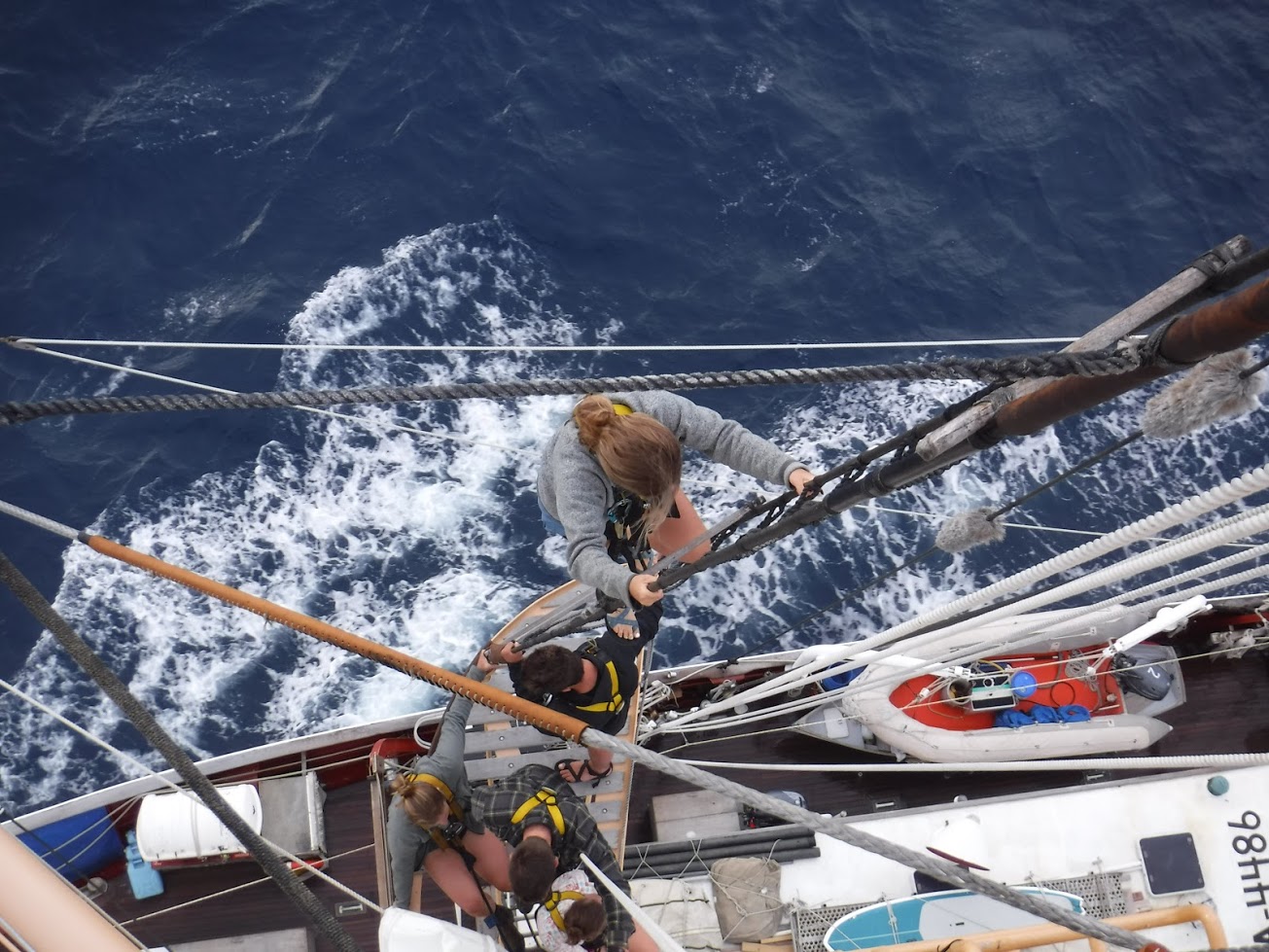
And of course, the trip wouldn’t be complete without some bad weather! One of our professors was saying how of all the trips he’s been on, this trip had the worst consistently bad weather with gales on three separate occasions. During the first gale, we continued to move along slowly, but the deck was restricted (everyone on deck had to wear a harness and clip to lines while walking around). The second gale was really bad with consistent 35 knot winds (which peaked at 44!), but since were on track to arrive in Wellington on time we hove to for 48 hours to wait it out (set up the sails in such a way to effectively park the boat while out at sea). Despite being hove-to, we still drifted over 100 nautical miles off course! During this gale, all of the students stayed below decks, and only the professional crew went on deck as needed. The last gale was a bit of a surprise since it wasn’t on the weather forecast, but since we had lost a lot of time to the second gale we didn’t want to heave to again to wait it out. Instead, we continued to make slow but steady progress to ensure that we made it to Wellington on time. Since the wind and swells were coming directly from where we wanted to go, we had to divert our trackline a bit, but ultimately made it to Wellington right on schedule.

Seeing marine life was also a nifty regular occurrence! See my post here for more details and photos of all the cool marine life we saw (and all of the science we did!). For now, I’ll end this post here. Till next time!
